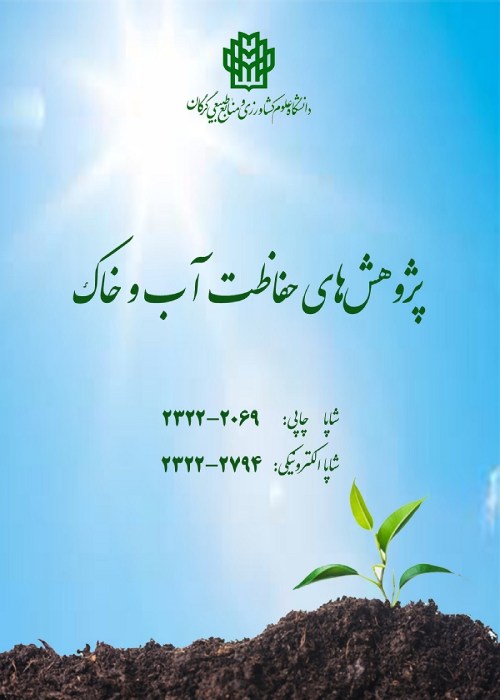Effect of enrichment and microbial inoculation on properties of sugar beet vinasse for application in farmland
Author(s):
Abstract:
Background And Objectives
Vinasse is a dark brown effluent of ethanol industrial process, which contains different organic and inorganic compounds and disposal of vinasse into the environment may create some problems. In recent years, different point of view at by-products and their application is taken into consideration. Application of vinasse in farmlands as a part of soil fertilization program is one of the cases. The aim of this study was to evaluate the effect of vinasse treatment with a consortium of three different bacteria and the effects on chemical and biological oxygen demand, phenol concentration and color of vinasse and also the effects of raw and treated vinasse on soil fungal and bacterial populations.Materials And Methods
Vinasse was supplied from Taghtir Khorasan company. In this study, A bacterial consortium comprising of three bacterial cultures, Pseudomonas aeruginosa, Stenotrophomonas maltophila and Proteus mirabilis was used to degrade vinasse. The effects of temperature degree, inoculum concentration, presence of mineral salts, different concentrations of humic acid and various sources of carbon and nitrogen on vinasse degradation was studied. To evaluate the effect of raw and treated vinasse on soil microbial community, populations of soil bacteria and fungi as an indicator of microbial population was determined.Results
The results showed that in optimum condition with inoculum concentration of 10 percent V/V at 38⁰ C under static condition the consortium reduced chemical and biological oxygen demand 57.1% and 75.7% respectively within 5 days. Also 59.2 % decolorization and 66.6 % reduction in phenolic matters was observed. Gglucose as a simple source of carbon increased the effectiveness of the consortium and humic acid as a complex source of carbon had a positive effect on the consortium effectiveness on vinasse. The most decolorization and reduction of chemical oxygen demand and phenol was in concentration of 40 mg L-1 of humic acid. Soil bacterial populations increased 27.6% and 17.0% by adding raw and treated vinasse to soil within 33 days. This was repeated almost similar to fungi.Conclusion
The results of this study showed the application of the consortium at optimum condition could considerably reduce color, chemical oxygen demand and phenolic matter concentration in vinasse and treating the raw vinasse with the consortium to reduction the potentially harmful effects could considered in ethanol industry. Adding raw and treated vinasse to soil, increased fungal and bacterial populations which the effect of raw vinasse was some more than treated one. Keywords:
Language:
Persian
Published:
Water and Soil Conservation, Volume:23 Issue: 6, 2017
Pages:
253 to 268
magiran.com/p1680445
دانلود و مطالعه متن این مقاله با یکی از روشهای زیر امکان پذیر است:
اشتراک شخصی
با عضویت و پرداخت آنلاین حق اشتراک یکساله به مبلغ 1,390,000ريال میتوانید 70 عنوان مطلب دانلود کنید!
اشتراک سازمانی
به کتابخانه دانشگاه یا محل کار خود پیشنهاد کنید تا اشتراک سازمانی این پایگاه را برای دسترسی نامحدود همه کاربران به متن مطالب تهیه نمایند!
توجه!
- حق عضویت دریافتی صرف حمایت از نشریات عضو و نگهداری، تکمیل و توسعه مگیران میشود.
- پرداخت حق اشتراک و دانلود مقالات اجازه بازنشر آن در سایر رسانههای چاپی و دیجیتال را به کاربر نمیدهد.
In order to view content subscription is required
Personal subscription
Subscribe magiran.com for 70 € euros via PayPal and download 70 articles during a year.
Organization subscription
Please contact us to subscribe your university or library for unlimited access!


